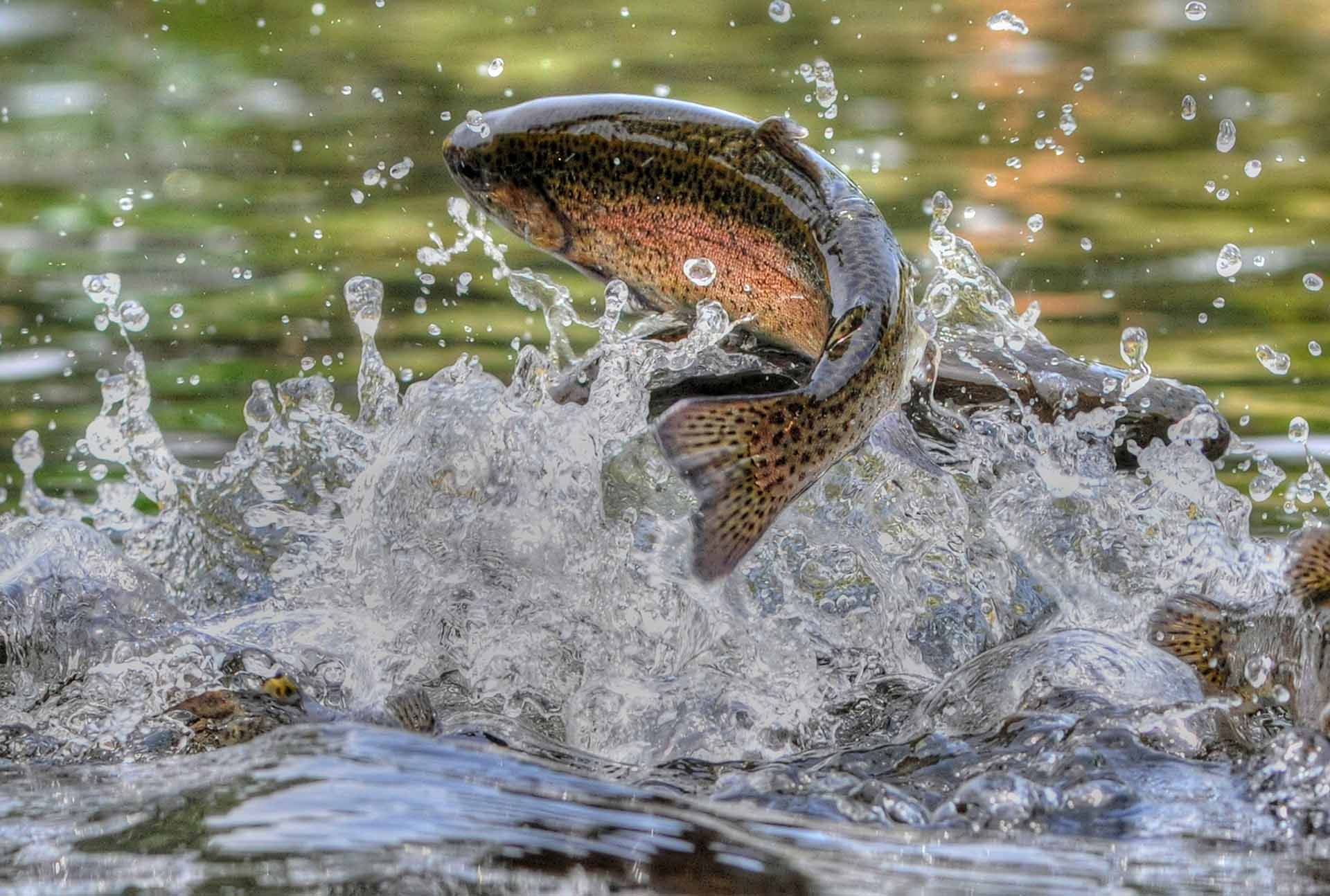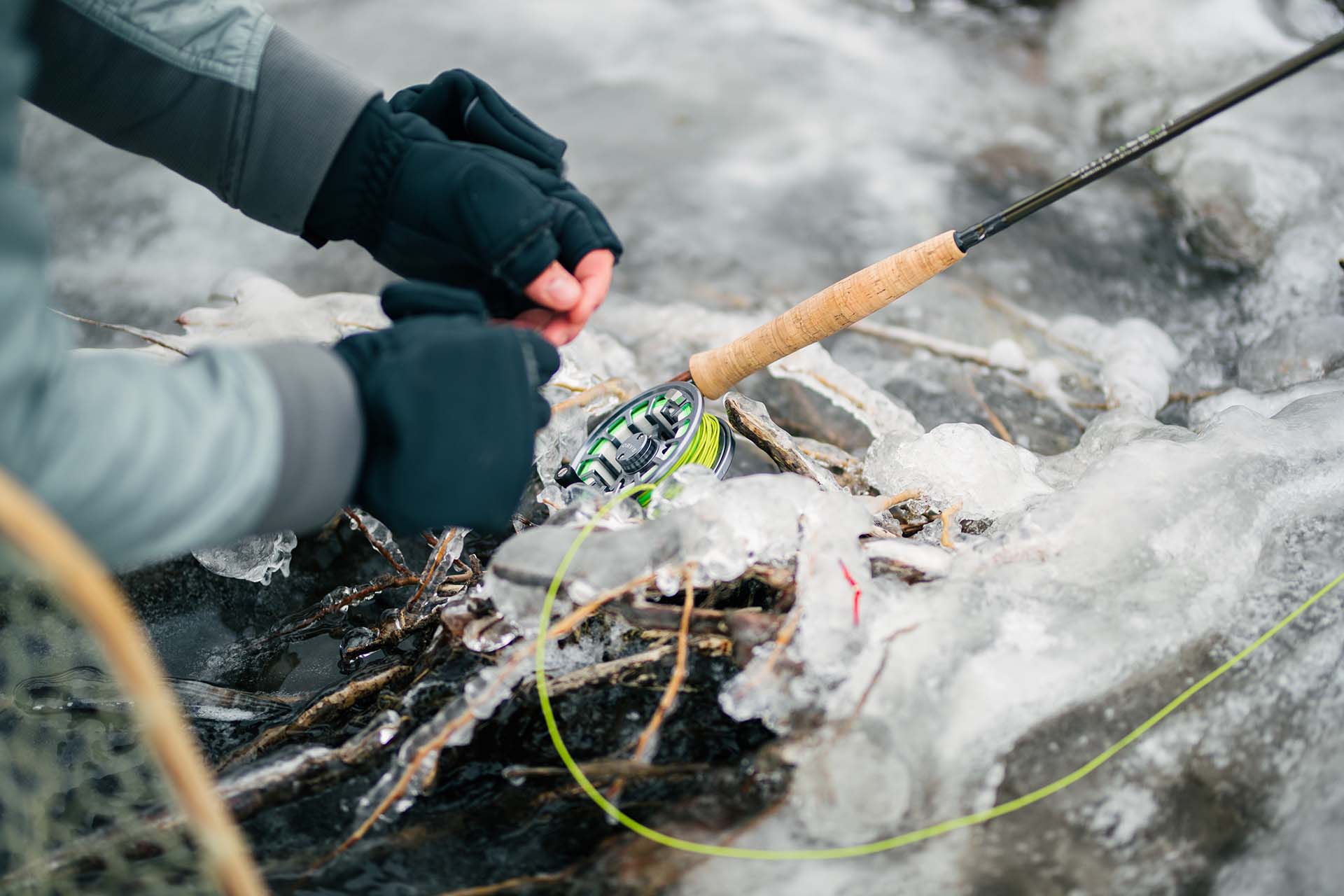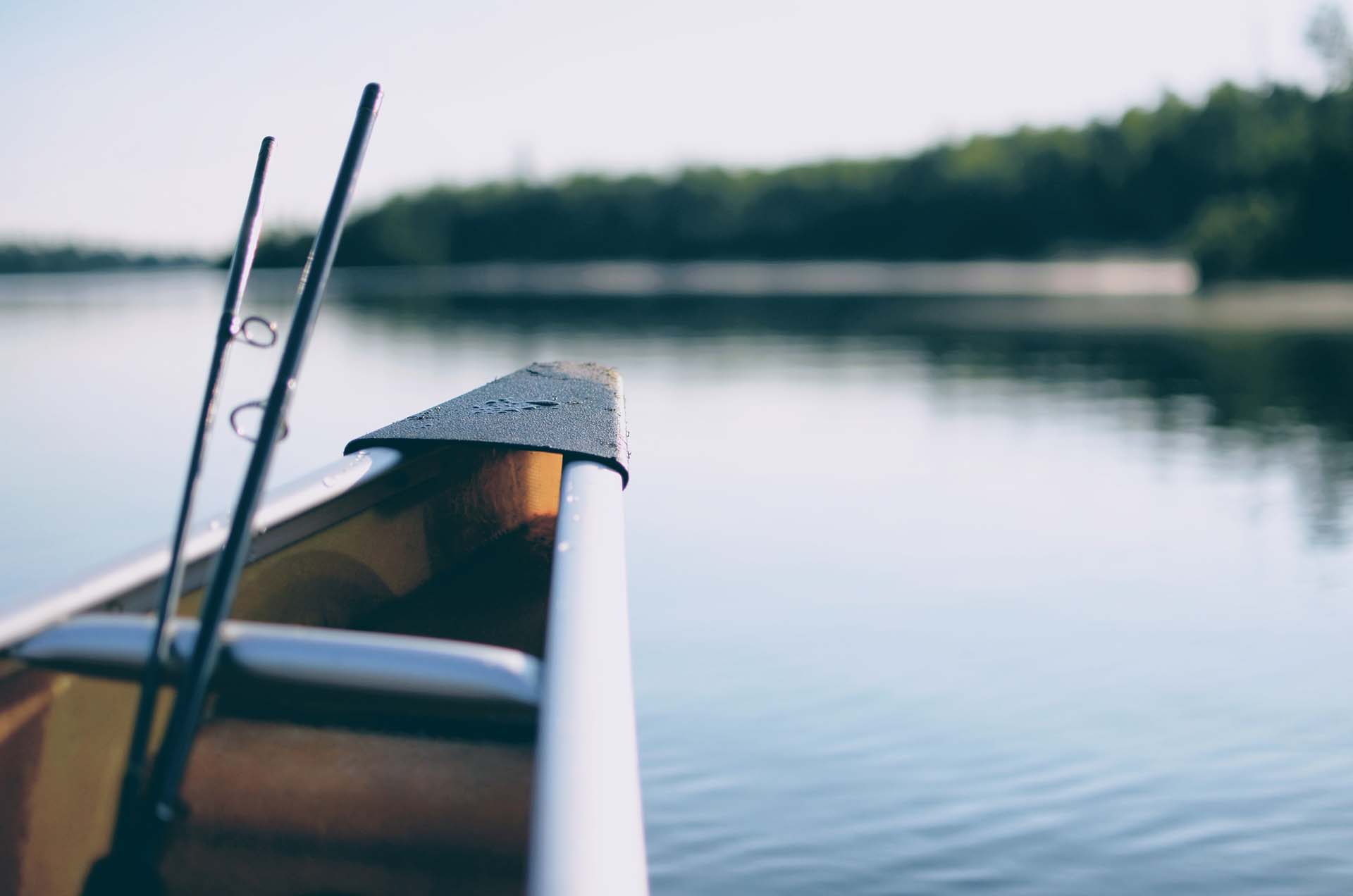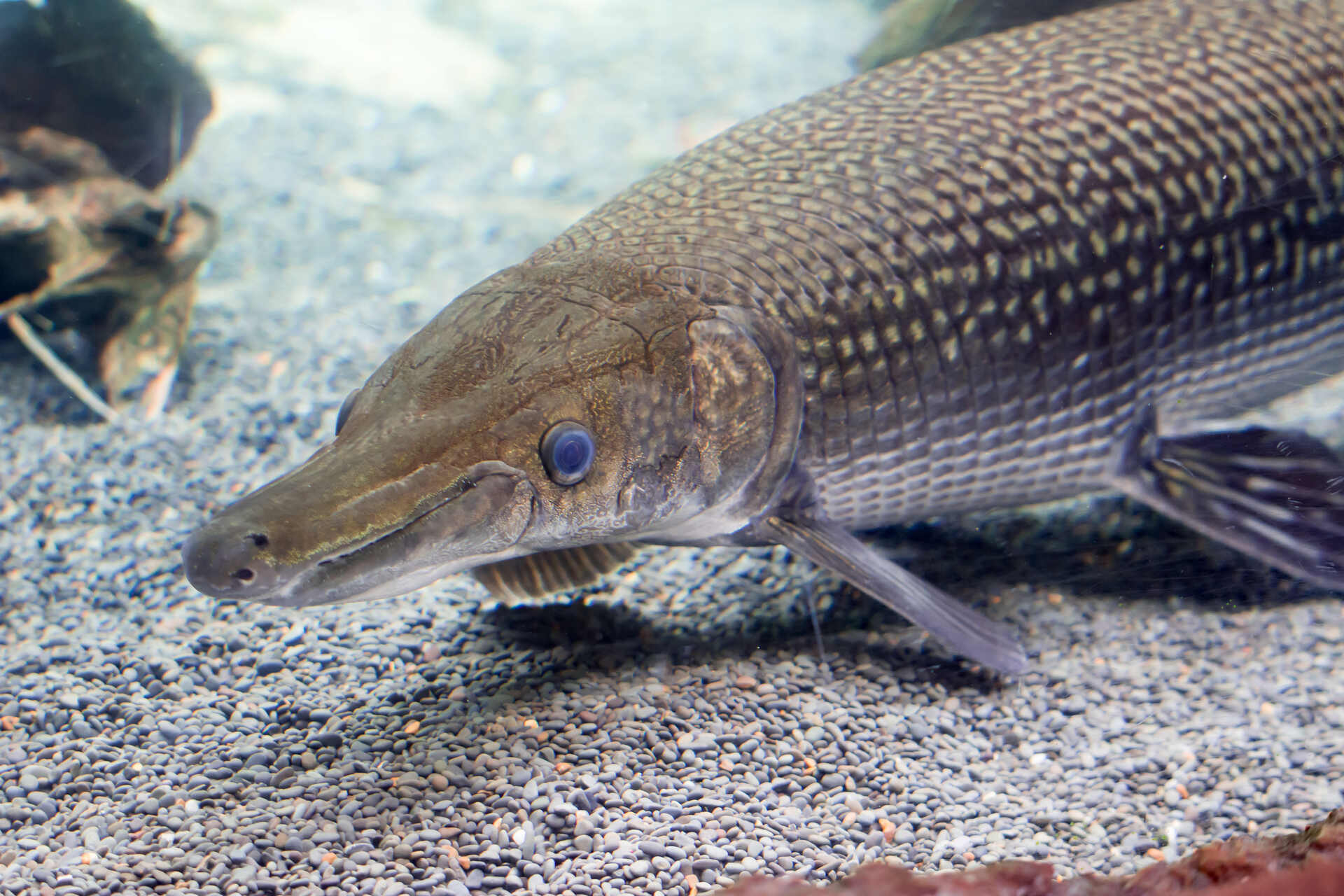Welcome to the winter wonderland of trout fishing, where savvy anglers discover that even as many pack up their gear during the colder months, winter unveils its unique challenges and rewards. Navigating the best time to fish for trout in winter becomes a thrilling pursuit, as icy waters hold secrets that only those persistent enough can uncover.
In this comprehensive guide, we’ll delve into the intriguing world of catching the fish on colder days, exploring the subtle changes in trout behavior, the best times to cast your line, the challenges of chilly mornings, regional variations in angling experiences, and the essential gear and tactics to ensure a successful winter fishing expedition. So, bundle up, sharpen your hooks, and join us on a journey to discover the secrets of cold water fishing in the winter chill.
Understanding Trout Behavior in Winter
The impact of water temperature on fish behavior is a crucial factor that shapes the dynamics of casting your line. As the mercury drops, trout exhibit a noticeable shift in their habits, influencing the best time of day to fish for lake trout in winter. Coldwater temperatures prompt these elusive creatures to conserve energy, affecting their metabolism and overall activity levels.
For anglers seeking success on the icy waters, this information is a game-changer. Additionally, water temperature is intricately connected with trout feeding habits – a crucial element in deciphering their movements. In colder temperatures, trout become more selective in their prey, making it imperative for fishermen to tailor their bait choices accordingly.
This connection between water temperature and feeding preferences adds an intriguing layer to the art of freshwater fishing on cold days. Furthermore, the broader implications of water temperature variations underscore the significant role of climate in shaping the angling landscape.
Casting the Line in Winter for Different Trout Species
Embarking on a winter angling expedition offers anglers the exciting opportunity to engage with a diverse array of trout species, each possessing its unique characteristics and behaviors. Here are some of the most common fish to catch:
- Rainbow Trout – known for its acrobatic leaps,
- Brown Trout – master of stealth in chilly waters,
- Brook Trout – adorned with vibrant colors,
- Lake Trout – dwells in deeper, colder realms and presents an enticing challenge for seasoned anglers.
As winter casts its icy spell, these trout species navigate the crystalline waters with a mysterious grace, making the pursuit of each a thrilling adventure. Whether you’re drawn to the challenge of hooking a trophy-sized Lake Trout or captivated by the vibrant hues of a Brook Trout in the winter chill, exploring the nuances of different trout species adds an extra layer of excitement to the frozen canvas of freshwater angling.

What Is the Best Time of Day to Fish for Trout in Winter
The best fishing times in the chilly season surely are afternoons. The winter sun plays a crucial role in luring trout out of their hiding spots. It’s because the sunlight triggers a cascade of events in the underwater world, including increased insect activity.
In the frosty embrace of winter, afternoons emerge as the optimal window for anglers seeking trout treasures. The best times for casting the line in the chilly season surely are afternoons. The winter sun plays a crucial role in luring trout out of their hiding spots. It’s because the sunlight triggers a cascade of events in the underwater world, including increased insect activity.
This delightful dance of light and life beneath the ice sets the stage for an angler’s success, as trout become more active and receptive to the carefully presented lure. The afternoons, bathed in the soft glow of the winter sun, offer not just warmth to the frigid waters but also a heightened opportunity for a memorable catch.
Explore Some of the Fishing Challenges of Casting the Line in Winter Mornings
Embracing the icy stillness of winter mornings for a trout-fishing venture brings its own set of challenges, weaving a tale of dedication and resilience for the ardent angler. The tranquil beauty of frozen landscapes masks hurdles that demand keen attention and strategic navigation:
Physical Discomfort
The biting cold can lead to numb fingers and reduced dexterity, making it challenging to handle equipment with precision.
Slippery Surfaces
The serene, snow-covered landscapes may disguise slippery ice patches, requiring cautious footing to avoid unexpected slips and falls.
Frozen Guides
Guides on angling rods can succumb to the winter frost, hindering the smooth passage of the line and disrupting the casting process.
Hidden Ice Hazards
Beneath the seemingly solid surface, hidden cracks and weak spots pose potential hazards, requiring constant vigilance to ensure safety.
Despite these challenges, the dedicated angler braving the winter morning waters finds a unique thrill in conquering these obstacles and uncovering the rewards hidden beneath the ice.

Adjust Your Angling Strategy Based on Winter Trout Fishing in Different Climates
Climate impact on fishing is a real thing and this means that catching trout in warm and cold climates are two different things. And the reason is quite simple: fish behavior is shaped by their environment. That’s how, for example, in the sun-drenched waters of Arizona, where warmth permeates the air, trout exhibit a vibrant energy, responding to the inviting rays. Contrastingly, the icy waters of Idaho demand a different approach, as trout navigate the frigid depths with a stoic resilience.
Temperature-Based Fishing Timetable
Did you know that air temperatures orchestrate the perfect moments for angling success? As the morning frost gives way to the milder afternoons, trout stir in response to the temperature dance. The sweet spot lies in the range between 40°F to 55°F (4.4°C to 12.8°C), where these freshwater gems become more active and receptive to your carefully presented lure.
This timetable becomes your compass, guiding you through the thermal rhythms of winter, ensuring that you’re in tune with the trout’s behavior. So, gear up, check the thermometer, and discover the magic hours when the chilly air transforms into the optimal backdrop.

Learn and Implement Some Top-Notch Winter Fishing Tactics and Gear
A successful winter angling expedition requires a mastery of top-notch tactics and gear tailored to the season’s unique challenges. It’s not just about casting a line. It’s a strategic dance with nature’s icy embrace. Seasoned and famous anglers know the importance of selecting the right winter fishing gear, from specialized rods and reels designed for cold-water conditions to choosing the perfect bait that entices even the most discerning trout.
One of the pro angler tips is layering up with weather-appropriate clothing. It ensures comfort during prolonged hours on the water while staying attuned to the subtle shifts in trout behavior and demands a keen understanding of winter angling tactics.
Fine-Tuned Tactics – Precision and Patience at Play
The most suitable fishing style when catching trout in the colder days often involves a patient and finesse-oriented approach. As the cold temperatures slow down the metabolism of trout, they become more selective in their feeding habits. Anglers commonly opt for techniques that allow for precise lure placement and mimic the slower movements of natural prey. Here are some effective winter angling styles for trout:
Still Angling
Utilizing stationary techniques, such as ice angling or angling from the bank, allows anglers to present the bait or lures meticulously. Patience is key as the trout may take their time inspecting the offerings.
Slow Retrieval
Whether using spinners, jigs, or soft plastics, a slow and deliberate retrieval mimics the lethargic movements of winter prey. This method can entice cautious trout to strike, but ensure you have the right rod.
Fly Fishing with Nymphs
Trout often focuses on subsurface insects in winter. Employing nymph patterns when fly fishing, presented at varying depths, can be effective in enticing trout looking for an easy, slow-moving meal. So, ensure you know what nymphing fly fishing is.
Ice Fishing Techniques
If angling on frozen waters, ice angling methods such as jigging or tip-up angling can be highly effective. These techniques allow for precise lure placement in specific depths.
Consider Conservation Practices for Enduring the Legacy of Our Aquatic Environments
Preserving the delicate balance of aquatic ecosystems and ensuring the sustainability of fish populations is very important. As stewards of natural resources, anglers play a crucial role in maintaining healthy habitats and safeguarding the future of their favorite angling spots. Sustainable fishing and catch-and-release practices, adherence to local fishing regulations, and minimizing environmental impact collectively contribute to the long-term well-being of fisheries.

Know When Is the Best Time to Fish for Trout in Winter and Be Succesful
Whether it’s pro or recreational fishing, when it’s in the cold days, you should gear up with some additional knowledge. As our journey through the winter trout-catching wonderland concludes, let’s recap the key takeaways. From understanding trout behavior to mastering the best times to cast your line and selecting the right gear, you’re now armed with the knowledge to turn the winter months into a prime season for reeling in the perfect catch. So, brave the cold, embrace the challenges, and experience the thrill of angling like never before. Happy fishing!
FAQ
What Is the Best Time of Day to Fish for Trout in Winter?
Generally, afternoons are considered the best time to fish for trout in winter. As the day warms up slightly, trout tend to become more active, increasing the chances of a successful catch.
How Does Water Temperature Affect the Best Time to Fish for Trout in Winter?
Water temperature plays a crucial role in determining fish behavior – as temperatures drop, trout become more sluggish, conserving energy.
What Role Does Sunlight Play in Influencing Trout Feeding Patterns in Winter?
Sunlight stimulates increased insect activity, which, in turn, influences trout feeding patterns. Exploring the relationship between sunlight, insect activity, and trout behavior can enhance your chances of a successful winter fishing expedition.
Are There Specific Challenges Associated With Morning Fishing for Trout in Winter?
Yes, casting the line in the cold winter mornings presents challenges such as physical discomfort and ice-related hazards. Navigating these difficulties requires careful consideration and preparation for a safe and enjoyable angling experience.
How Do Local Weather Conditions Impact the Best Time to Fish for Trout in Winter?
Local weather conditions, including temperature variations and wind patterns, play a significant role in determining the best times to fish for trout. Adapting fishing strategies based on the specific weather conditions in your region is essential for a successful winter fishing outing.









